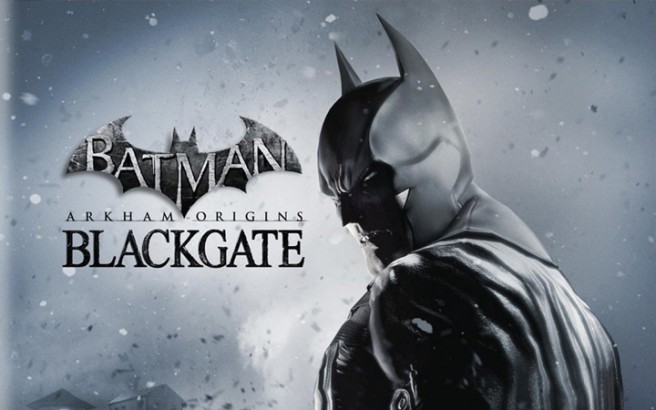[Review] Batman: Arkham Origins Blackgate
Posted on November 9, 2013 by Austin(@NE_Austin) in 3DS, Features, Reviews
System: Nintendo 3DS
Release Date: October 25th, 2013
Developer: Armature Studios
Publisher: Warner Bros. Interactive Entertainment
Author: Austin
“Hi, I’m Batman, and here’s uh… here’s my next game thing.”
Batman has been on a real kick lately, courtesy of the The Dark Knight trilogy of movies (which in turn, I understand, are courtesy of some graphic novels), and some of his most critically acclaimed recent appearances have been in videogames. This trend– on its fourth year– continues with the release of Batman: Arkham Origins and its sister game Batman: Arkham Origins Blackgate. The latter of the two is the one that will be discussed here.
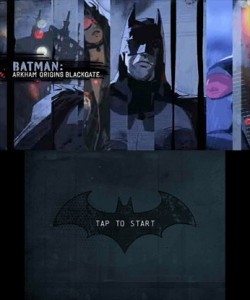
Arkham Origins Blackgate opens itself up to players with a tutorial mission (standard fare for most games) that has you (Batman) chasing Catwoman across the rooftops of Gotham City’s skyscrapers in order to learn the basics of movement, combat, and extraneous mechanics like the game’s “Detective Mode”. As is to be expected, everything is as guided and linear as something could be: You can only move left or right despite the appearance of 3D environments, the game prompts you whenever it’s time to use your grappling hook (or other item) for environment traversal, the screen proudly parades instructions for context-sensitive actions (“stealth takedowns”, “crouch to enter this vent”, etc), and strategies for a smooth play experience are unmistakable despite a haphazard attempt to hide them behind a story-less story and artistically sound cutscenes.
The tutorial ends, and it is to be expected that the amazingly clunky marriage of teaching and game-playing (which, I should make clear, is unacceptable despite its prevalence in many games) will henceforth cease. Unfortunately for Blackgate, that overbearing, frightened teacher never quite leaves you alone; it gives the sense that someone, somewhere was concerned for player “well-being” and took cause to remove any sense of frustration or pause that the game-playing experience might bring. In layman’s terms, they refuse to give players the chance to think.
In layman’s terms, they messed up.
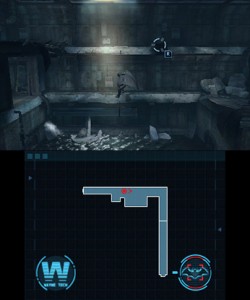
Exploration and player agency are perhaps the two most important elements to making a game like Blackgate interesting, and for one reason or another neither are really present here. Since the game is chiefly about getting from one point to another, it follows suit that such traversal should be made interesting for the player in order to make the game something desirable to play. There are a lot of ways to do this, but the most common is to make getting from point ‘A’ to point ‘B’ something of a puzzle; that is, players should often ask themselves “Hmm… how do I get there?” before thinking about it and eventually coming up with the solution. Solving this dilemma is satisfying, and it represents the strength of something like Metroid, which I draw comparison to only as a useful analog for readers.
Blackgate does the opposite of this, which is perhaps its most glaring flaw. Any time that an opportunity arises for the player to get momentarily– even indistinguishably– stuck, up pops a text prompt telling you to use ‘R’ to grapple to the next point, ‘A’ to go in a vent, ‘B’ to open a door, or so on and so forth. The game experience is smooth and without frustration, but it also lacks any cerebral (simply meaning “to do with thinking”) dynamics, and as a result very little to do with the game’s exploration sticks out as memorable, interesting, or satisfying. A bit of this is made up for with some great sound design, animations, and camera work, but such things are superfluous to what could have been a fundamentally– instead of superficially– interesting experience.
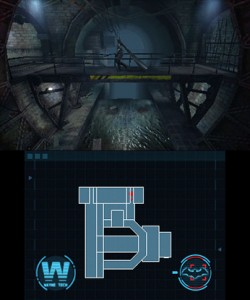
Maybe the most unfortunate thing about this is that one couldn’t simply remove these text prompts because environments aren’t really designed with any attention to visual/environmental cues. Remove the prompt to use your grappling hook, and you also remove any indication that a grappling hook should be used, making it feel unfair when you finally figure it out; (“How was I supposed to know that?” syndrome). A marginal restructuring of visual identity would be needed to give the player useful-but-subtle hints (a small target to indicate a grapple-able location, perhaps?) without literally telling them what to do.
Instead, you’ll spend most of the game wandering either to the left or right (despite the game’s 3D appearance, it’s only bi-dimensional in movement), waiting for a prompt, following said prompt, and then walking left or right again until another prompt appears. There is occasionally brief respite from this inexhaustible non-activity courtesy of the game’s wonderfully designed combat– to be touched upon later– but beyond that the only times you’ll have your progress hindered or challenged is when you hit a wall and are required to take out your scanner to find a button to press, a wall to blow up, or some either environmental obstacle to tackle.
It’s worth noting that such obstacles cannot be dealt with before scanning them, so if you see a cracked wall that needs blowing up, you’ll be unable to target said wall with your bomb-gun until you scan it first; the scanner is, by and large, a fundamentally unnecessary middle-man endowed with artificial purpose by a design that says “Batman needs a scanner” regardless of its underlying validity.
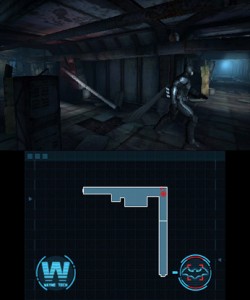
So, the majority of the game is as mentioned: Non-thinking, non-difficult, and largely uninteresting. Once in a while, though, there’s a glimmer– a ray through the clouds– of a genuinely interesting action game. Certain stints of gameplay, particularly in the game’s latter half, have you doing lots of rapid-.
by-comparison traversal with Batman’s aurally and visually satisfying tools with a healthy dose of combat given at regular intervals. These segments do not acquiesce with the brooding and cerebrally satisfying vision reached for by many of the game’s earlier bits, but they are successes in their own right. Had the entire game been paced similarly– the focused placed more on combat than traversal– the package would have been stronger.
And so as not to forget about the combat: Blackgate’s combat mechanics are excellent, both in “triple-A” gloss and in genuine, rhythmic pleasure. Scuffles between Batman and the various thugs boil down not to button mashing or a mastery of hitboxes, but rather the player’s ability to recognize symbols and react with the appropriate combination of buttons. If you’re facing off against one regular enemy, you can rapidly mash the “punch” button and no harm will come to you under any circumstance. When multiple enemies are added to the fray, things become more interesting: A symbol appears above the head of an enemy to indicate that he is about to strike, and the only way to avoid it is to quickly press the “grapple” button. If all goes well, you’ll throw him to the ground and no harm will come to you.
So the combat is now a game of rhythm– a game of reflexes and visual acuity– where you push one button (“punch”) until a symbol appears prompting you to hit another one (“grapple”), you push that one to avoid breaking the flow, and then go back to pushing the first in a repetitive pattern requiring just enough focus to be interesting, without so much that the pacing is constantly ruined by your potential lack of skill. As things move forward in the game, more variables (enemies) are added and more button combinations will be expected of you, but the foundations of combat in Blackgate remain the same: It’s all about rhythm, and it’s oh-so satisfying.
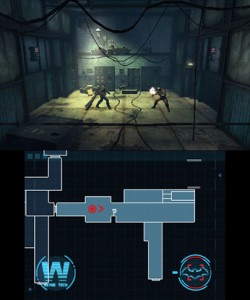
Ultimately, Batman: Arkham Origins Blackgate is a game that practically plays itself, guiding the player through the necessary steps to win one-by-one without letting them stray even briefly off of the artificially well-beaten path. Sometimes this thoughtless experience succeeds, but more often than not it comes across as tepid: not quite boring, but not quite fun either. There are few– if any– fundamentally interesting or gratifying gameplay elements, and most anything that might be intriguing in a general sense has its vibrancy zapped by the designers’ choice to tell players every answer before letting them think for themselves. The core combat is worth a look, but even it– which is really the only deeply satisfying element of the game– ends up feeling more like a quality piece of another game added for the sake of, rather than something that has any reason to be placed within this unfocused, meandering sidescroller.

Though the game doesn’t boldly succeed at much of anything beyond a very well-thought-out combat engine, Batman: Arkham Origins Blackgate is a serviceable sidescrolling adventure for those with a passing interest in either the genre itself or the lore of Batman. Very little about it is wholly fun or well-designed, but, acceptably, very little about it is entirely boring either. It’s a fine piece of work– just not one that comes particularly close to being great.
Want to participate in more NintendoEverything goodness?
Try our Facebook page!
Or our Twitter page!
